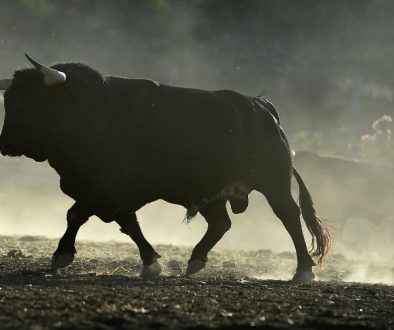As the situation in emerging markets deteriorates, investors are scrambling to protect their portfolios from the turmoil and a potential emerging markets crisis.
Almost all the FTSE 100s constituents are likely to be affected in one way or another by emerging market troubles, and the banking sector will suffer the most from any economic crisis. The question is, how exposed are banking sector favourites Santander (LSE: BNC)and Barclays (LSE: BARC)?
Scaling back
Barclays has been scaling back its international operations since the financial crisis and now the bank is relatively UK-focused.
Indeed, Barclays personal and corporate banking division was responsible for around 40% of the groups pre-tax profit during the first-half of the year. This segment is mainly UKand US focused. Also, Barclaycard contributed around 21% of first-half group pre-tax profit. The majority of Barclaycards customers are located within Europe, the UK and US.
However, Barclays African arm could be heading for stormy waters.
African exposure
Barclays Africais based in South Africa, which is one of the emerging markets that has been attracting a lot of negative coverage recently. The South African rand slumped to an all-time low against the dollar and many of the countrys state-run companies are on the verge of collapse,threatening to crush already weak economic growth.
Still, Barclays Africa is only a small part of the Barclays group. Barclays African arm generated only 15% of group pre-tax profit during the first half and assets only amount to 4.5% of total group assets.
The other part of the Barclays group that could be impacted by the crisis is the companys investment bank. That said, profits at investment banks tend to increase as markets become more volatile there are more opportunities for traders to take advantage of.
Bucking the trend
Like Barclays, the majority of Santanders profits come from developed markets such as Spain, the US andUK. These three key markets accounted for 45% of the groups gross income during the first half and expanded 6% overall year-on-year.
Unfortunately, Santander is the largest overseasbank doing business in Brazil, another emerging market that has been hit hard by recent market turbulence. Brazil is plagued by rising inflation, slowing growth, a weakening currency and surging debt levels.
Brazil accounts for a quarter the Santander groups gross income and at present, Banco Santander Brasil SA, Santanders Brazilian subsidiary, is bucking wider market trends.
Second-quarter profit at the division topped estimates by 16% as a jump in interest income helped offset the impact of rising expenses and declining loan disbursements. Recurring profit jumped 16.6% year-on-year. Whats more,Banco Santander Brasil SA, Santanders Brazilian subsidiary recently announced that it was making acompetitive offer for the local unit of HSBC Holdings Plc. HSBC Brazil has been valued at$3.6bn or 1.2 times book value.
So, as long as Santander can continue to grow in Brazil, the bank might be able to avoid the emerging markets crisis.
A hidden gem
If you’re looking for other ways to escape the emerging market mayhem, our top analysts here at The Motley Fool have recently discovered a UK company that they believe could see its sales increase by300% to 500%over the next few years.
This company could be one of the most impressive growth stocks around and is unlikely to beeffectedby emerging market turmoil.
Nevertheless, few have realised itspotential,and as a result, the company in question has been touted a one of themarket’s hidden gems.
To find out more download ourfree report today. The report will be delivered to your inbox immediately, and there’s no further obligation.
This is somethingyou do not want to miss!
Rupert Hargreaves has no position in any shares mentioned. The Motley Fool UK has recommended Barclays. We Fools don’t all hold the same opinions, but we all believe that considering a diverse range of insights makes us better investors.





